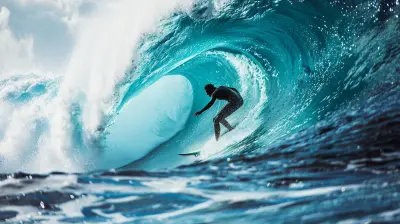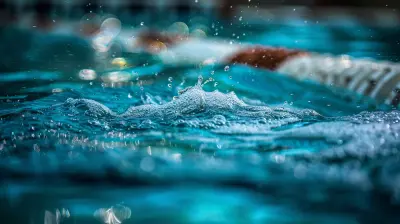Surf Photography Tips for Capturing the Perfect Wave
24 August 2025
Let’s be real – there’s something absolutely magical about the ocean. The way the sunlight kisses the crest of a breaking wave, the fluid power of a surfer slicing through the face of a barrel, or that heart-pounding moment just before impact... it’s all poetry in motion.
If you’ve ever stood on the beach, camera in hand, trying to freeze that perfect moment in time, you already know: surf photography isn’t as simple as "point and shoot." It’s wild, unpredictable, and totally addicting. Whether you're a seasoned shutterbug or a grommet with a GoPro, I’ve got your back.
Grab your towel, throw on some zinc, and let’s dive into the ultimate guide to capturing epic surf shots.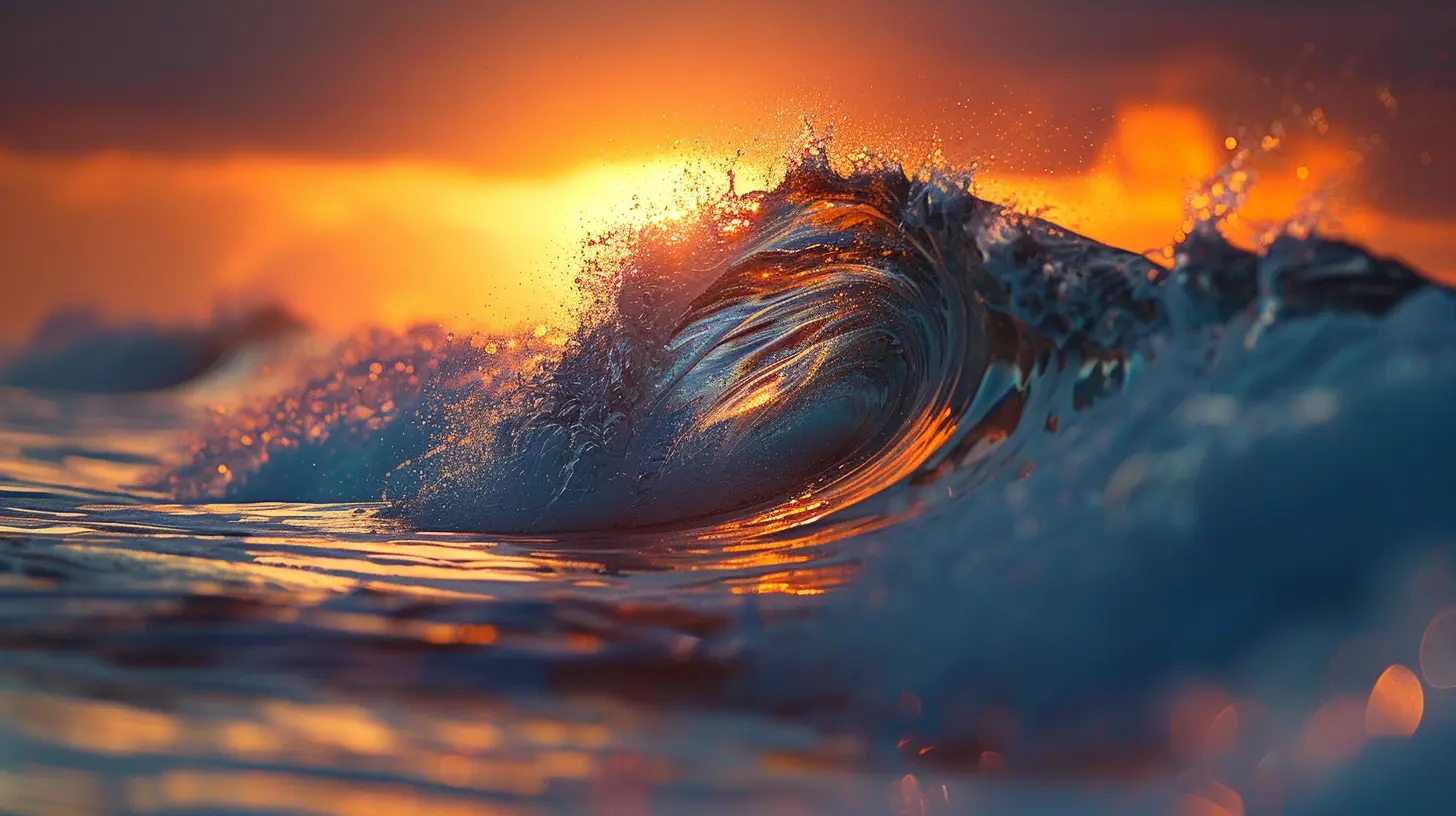
Why Surf Photography is So Darn Challenging (and Awesome)
Before we talk gear and settings, let’s talk about the beast itself. The ocean. She’s stunning, but she doesn’t play fair.Waves don’t pause for a photo op. Surfers move fast, lighting can change in seconds, and saltwater is basically your camera’s arch-nemesis. You’re dealing with motion, distance, unpredictable weather, and sometimes even flying boards coming your way.
But that’s the thrill, right? The unpredictability forces you to be present, to anticipate, and to react quickly. And when you nail that shot—the board mid-air, the spray frozen like diamonds—it’s all worth it.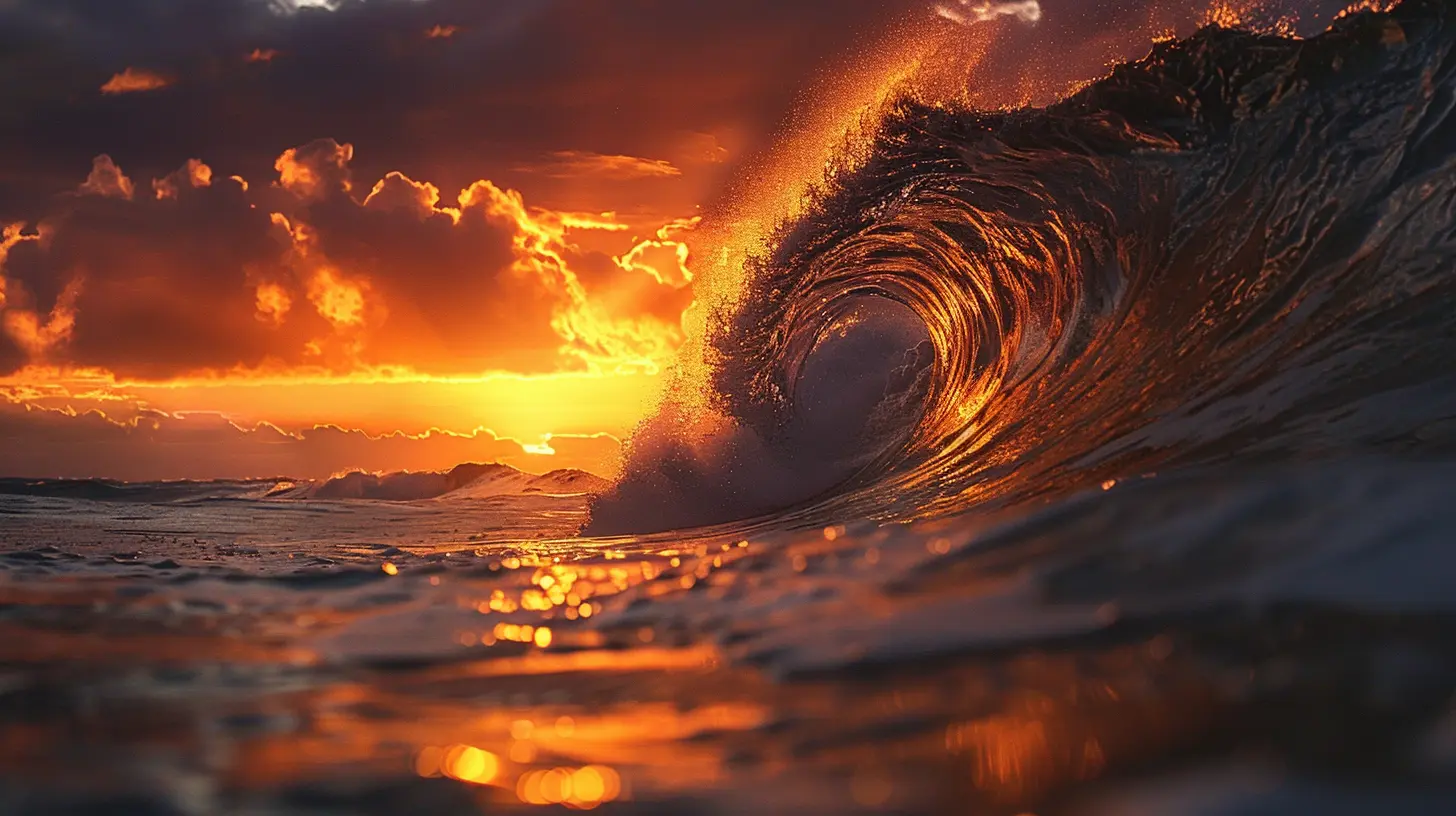
Gear Up: Essential Equipment for Surf Photography
Let’s talk tools. You don’t need a suitcase full of gear, but a few key pieces can make a big difference.1. Camera Body
DSLRs and mirrorless cameras are great because of their fast shutter speeds and burst shooting capabilities. If you're just starting out, don't sweat it—a trusty mirrorless camera or even some bridge cameras can still bag killer shots.Pro tip: Full-frame sensors are awesome for low-light beach mornings and give better depth, but crop-sensor cams can actually work in your favor if you're shooting from the beach—they give you more reach!
2. Lenses Matter (A Lot)
- 70-200mm f/2.8: This lens is a surf photography workhorse. Great for beach shots with just enough zoom and beautiful bokeh.- 100-400mm: Want to capture the action when the waves are far out? This beast gets you close without stepping into the splash zone.
- Wide-angle (14-24mm or fisheye): Perfect for in-water shots, barrel sequences, or close-up action.
3. Water Housing
If you want to get in the lineup with the surfers, you'll need a solid waterproof housing. Don’t cheap out here—saltwater will wreck your camera faster than you can say “wipeout.”Brands like Aquatech, SPL, and Liquid Eye make some solid, surf-tested housings.
4. Tripod & Monopod
A tripod can be your best friend when you're shooting from the sand and waiting for that perfect set. A monopod, on the other hand, gives you mobility without sacrificing too much stability.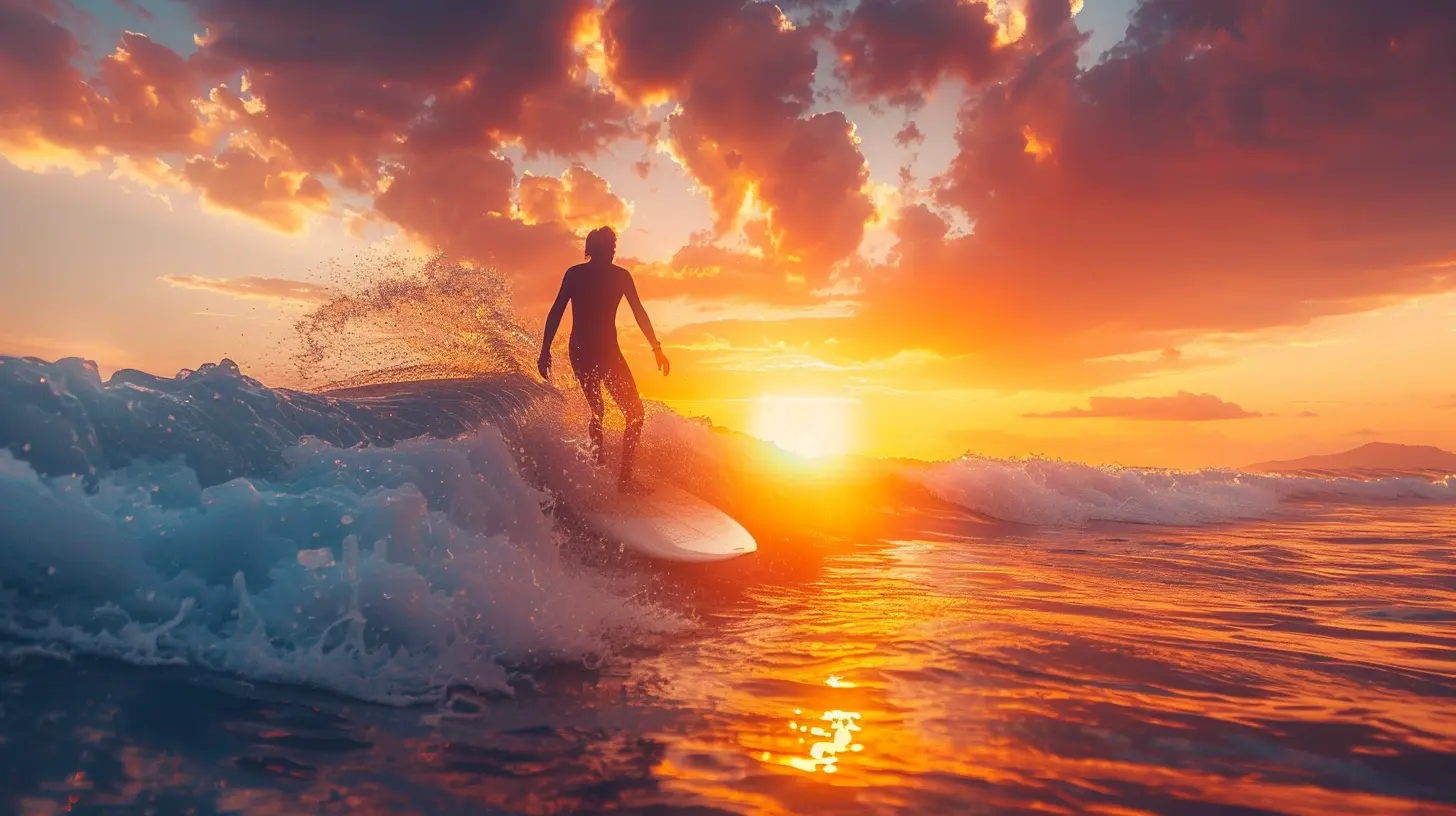
Dialing in Your Camera Settings
Camera settings can make or break your surf photos. Let’s simplify things:1. Shutter Speed
Motion is everything in surf photography, and you need to freeze it. A fast shutter speed (think 1/1000 sec or faster) is essential to capture the crisp detail of crashing waves or airborne surfers.Going slow? That’s fine too—intentionally slowing your shutter (like 1/30 sec) can create artsy, dreamy motion blur. Just know what you're going for.
2. Aperture
If you’re shooting in the water and want more in focus, go for f/4 or smaller. But if you're trying to isolate your subject with a creamy background, f/2.8 will do the trick.3. ISO
Keep it low for minimal grain, especially during bright daylight. But don’t be afraid to bump it up if you’re chasing golden hour shots. Modern cameras handle high ISO surprisingly well.4. Focus Mode
Use Continuous Autofocus (AF-C or AI-Servo) to track moving surfers. Trust me, one-shot focus will leave your images as muddy as a beginner’s first pop-up.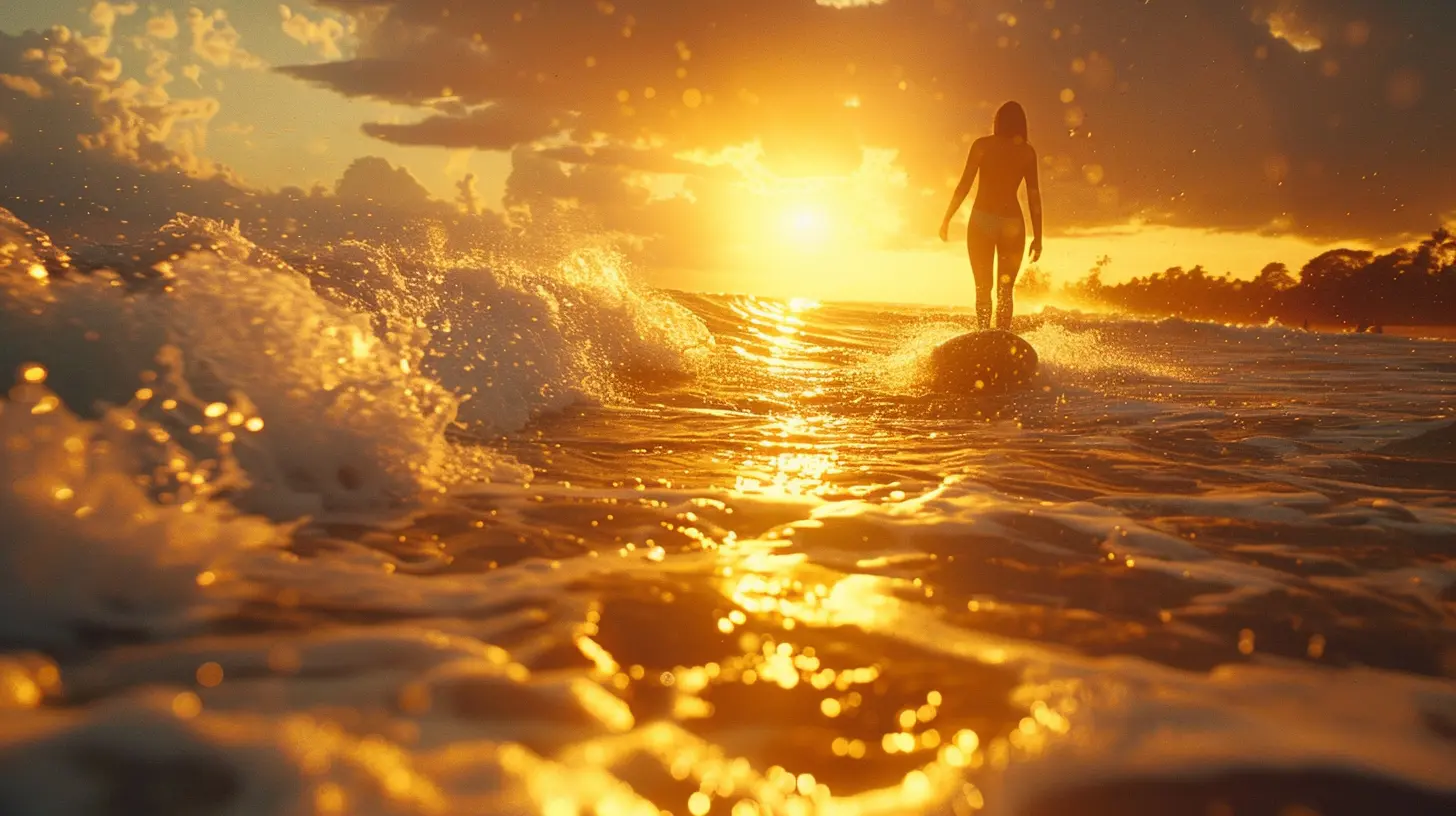
Timing Is Everything
Ever heard the phrase "right place, right time"? It’s basically the motto of good surf photography.1. Golden Hour Magic
Shoot early morning or late afternoon. Not only is the light softer and more dramatic, but the lineup is usually less crowded. Less crowd = cleaner shots.2. Check the Swell Report
Apps like Surfline, Magicseaweed (RIP MSW, but the data lives on), and Windy will help you track swell direction, wave height, and tide. Knowing when the waves will be pumping helps you plan your shoots like a boss.3. Understand the Break
Every surf break is unique. Some are better at high tide, others work best at low. Some are fast and hollow (perfect for barrels), others are slow and mushy. Study your local break like it’s your favorite Netflix series.Composition Tips: Make Your Shots Pop
Let’s talk artistry. Anyone can snap a wave, but composition turns it into a story.1. Rule of Thirds
Classic for a reason. Place your surfer off-center, giving space in the direction they’re moving. It adds drama and dynamism.2. Leading Lines
Use the curve of a wave, the angle of a board, or even the horizon to lead your viewer’s eye straight to the action.3. Include the Environment
Don’t zoom in too tight all the time. Show the shoreline, the cliffs, the palm trees... give your photos context and atmosphere.4. Shoot the Build-Up AND the Aftermath
Everyone wants the mid-turn spray or the barrel, but don’t forget the moments before and after—the anticipation, the recovery, the paddle back out. These shots are gold for storytelling.Get In the Water (When You’re Ready)
Shooting from land is one thing, but getting in the water brings a whole new level of intimacy and intensity to your photos.1. Safety First
Know how to swim confidently in rough surf. Wear fins for mobility. And always have an exit plan. The ocean is beautiful—but she’s not always kind.2. Positioning is Key
Float just outside the impact zone, and line yourself up with the takeoff point. You’ll need to anticipate where the surfer will be, rather than react once they’re on their feet.3. Focus on Barrel Shots
Want that ultra-famous "from-inside-the-barrel" shot? Time your dive perfectly, use a wide-angle lens, and shoot as the wave curls over. You’ll probably get wiped out. But when you nail it? Chef’s kiss.Editing: Bring Your Shots to Life
You’ve got your shots, now it’s time to polish them.1. Lightroom or Bust
Adobe Lightroom is your best friend here. Adjust contrast, highlights, clarity, and color to bring out the wave's emotion and power.2. Don’t Overdo It
A little saturation is fine, especially to bring out those turquoise tones. But skip the heavy filters. You want the shot to look epic, not alien.3. Crop with Intention
A slight crop can improve composition, especially if your subject is a bit too centered. Just don’t go crazy and lose resolution.Tips for Shooting Different Surf Conditions
Different waves, different approaches.1. Small, Clean Waves
Best for artsy close-ups. You can focus on technique, expressions, and style. The vibe is mellow, so match your shooting style.2. Big, Hollow Waves
Time to go beast mode. Think high shutter speed, zoom lens, wide-angle if you’re in the water. These are your magazine cover shots.3. Stormy Sessions
Cloudy skies and messy conditions can still make for dramatic photos—especially in black and white. Embrace the chaos, but mind your gear. Bring a rain cover and clean your lens constantly.Bonus Tips From the Lineup
- Know the Locals: If you're new to a break, respect the local surfers. Don’t float in their zone unless you’ve got the go-ahead.- Communicate with Surfers: Collaborate! Let them know what you're looking for, and they may throw a stylish maneuver just for your lens.
- Shoot in Bursts: Continuous mode is your best friend during action. It ups your chances of catching that one perfect frame.
- Keep a Lens Cloth Handy: Water droplets on your lens = ruined shots. Wipe frequently.
- Protect Your Gear: Bring silica packs to prevent moisture and corrosion. Rinse your housing post-session with fresh water.
Wrapping It Up
Surf photography is a balance of preparation and spontaneity. You learn by trial and (lots of) error. Some days the waves are flat. Other days you forget to recharge your batteries (been there, done that). But every time you come home with sand in your shoes, salt on your lens, and maybe just one killer shot—you’re hooked all over again.Remember, you're not just freezing motion. You're capturing soul, speed, and saltwater alchemy.
So what are you waiting for? Grab your camera, chase some swell, and capture the ocean doing her thing.
May your memory cards be full and your zoom lens always in focus
all images in this post were generated using AI tools
Category:
SurfingAuthor:

Easton Simmons
Discussion
rate this article
1 comments
Viviana Chavez
Embrace the thrill of the ocean! With these surf photography tips, you’ll not only capture stunning waves but also the spirit of adventure. Remember, each shot is a chance to share the beauty of the sea and inspire others to ride their own waves. Keep shooting!
September 15, 2025 at 4:32 AM

Easton Simmons
Thank you! Embracing the ocean's thrill truly elevates our photography and inspires others to explore the waves. Keep capturing that adventure!
